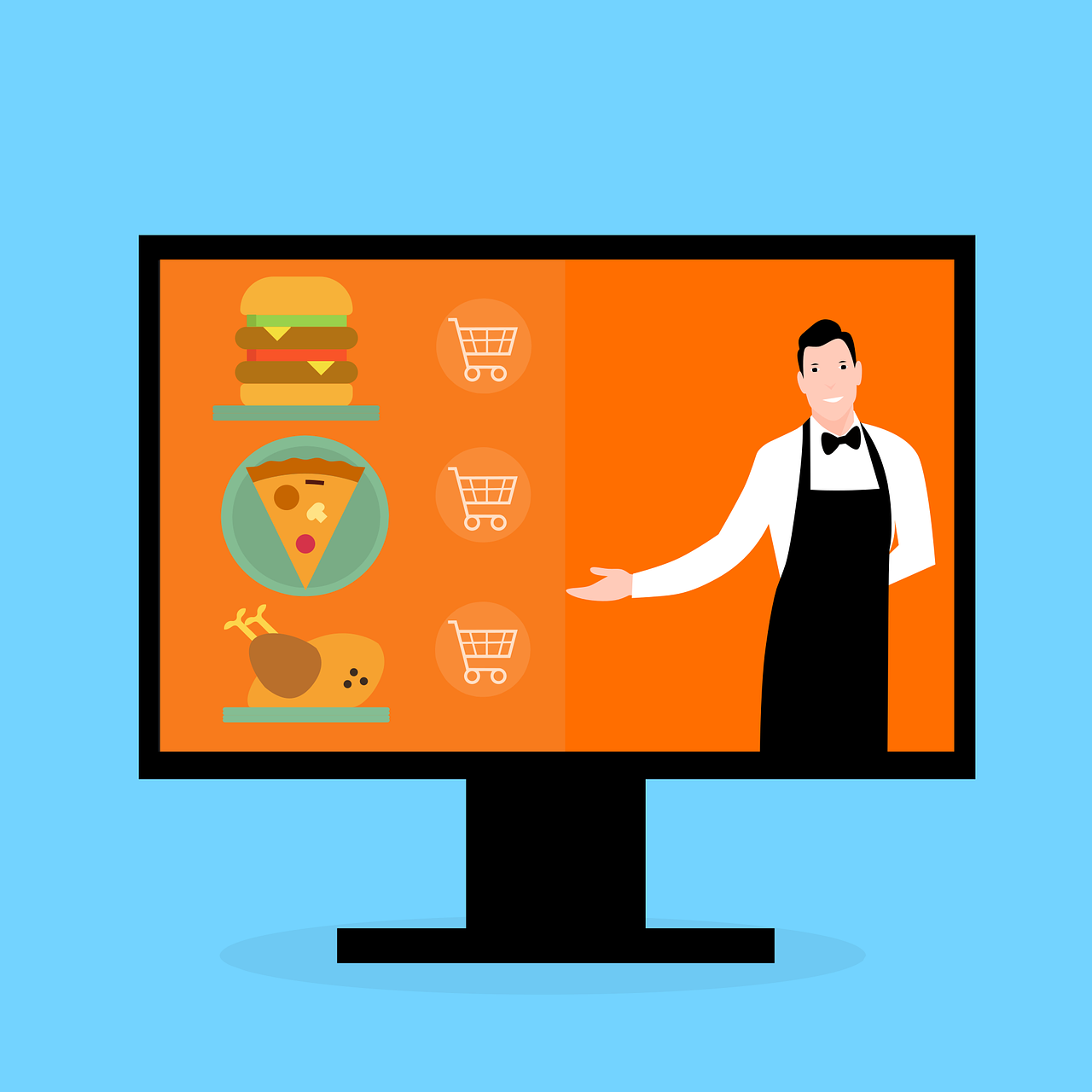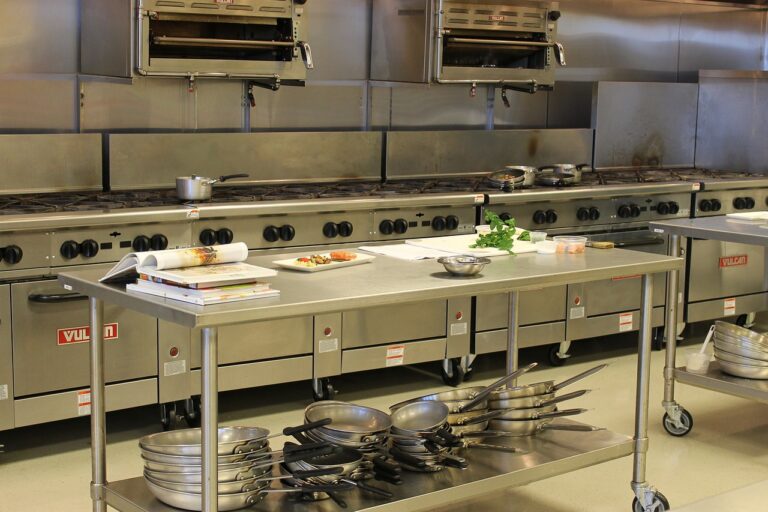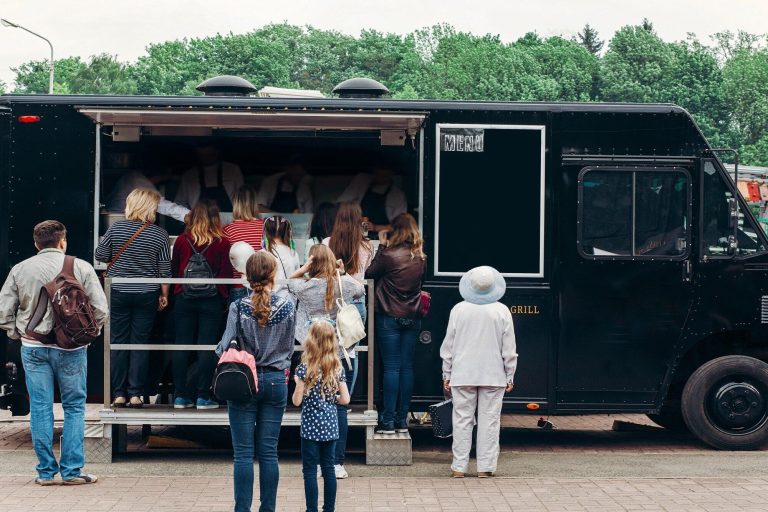The Impact of Food Delivery Software on Small Restaurants
The restaurant industry has been forever changed by food delivery software. With the advent of food delivery apps, the way people order and receive their meals has undergone a complete transformation. But what does this mean for small and independent restaurants? Well, they are now able to tap into a wider customer base thanks to these innovative platforms.
Food delivery software has created an entire ecosystem of contactless delivery that allows restaurants to increase their delivery volume while maintaining high standards of food quality. Moreover, it provides valuable customer data that can have significant implications on a restaurant’s operations and growth. From understanding customer sentiment scores to analyzing purchase intentions, these insights shape decisions in real-time.
Let’s take a look at a sample scenario: A small restaurant with limited seating capacity can now reach customers beyond its physical size through food delivery apps. By utilizing drivers from the platform, they can efficiently deliver meals without worrying about logistics or high fees. This not only boosts revenue but also enhances customer satisfaction.
So buckle up as we explore this exciting topic together!
Understanding the Pros and Cons of Offering Food Delivery Service
Offering food delivery service can be a game-changer for small and independent restaurants. It opens up new avenues for revenue generation and expands their customer base. However, like any business decision, there are pros and cons to consider before implementing a food delivery service. Let’s delve into these factors to gain a deeper understanding.
Increased Revenue Potential
One of the major advantages of offering food delivery service is the potential increase in revenue. By reaching customers beyond their physical location, restaurants can tap into a larger market and cater to a wider audience. This translates to more orders and higher sales volume. Moreover, in today’s fast-paced world where convenience is key, providing delivery options can attract customers who prefer enjoying meals in the comfort of their own homes.
Operational Challenges
While the idea of boosting revenue sounds enticing, it’s crucial for small and independent restaurants to recognize the challenges that come with offering food delivery service. One significant hurdle is the increased operational costs associated with running a delivery system. From hiring additional staff to cover deliveries to investing in packaging materials, vehicles, or partnering with third-party delivery platforms, these expenses can add up quickly.
To mitigate some of these costs, restaurants may opt for outsourcing deliveries through third-party services such as Uber Eats or DoorDash. While this reduces the burden on restaurant owners to manage logistics directly, it comes at an additional cost since these platforms charge commission fees per order.
Weighing the Pros and Cons
Given both sides of the equation—increased revenue potential versus operational challenges—it becomes essential for small and independent restaurants to carefully evaluate whether offering food delivery service aligns with their business goals.
To make an informed decision:
- Analyse your target market: Determine if your customer base would benefit from having access to food delivery options.
- Assess financial feasibility: Calculate projected revenues against anticipated costs involved in setting up and maintaining a delivery system.
- Consider competition: Research what other restaurants in your area are doing and whether offering delivery would give you a competitive edge.
- Evaluate logistics: Determine if you have the resources, staff, and infrastructure to handle deliveries efficiently or if outsourcing is a more viable option.
It’s important to remember that each restaurant’s situation is unique, so what works for one establishment may not work for another. Conducting thorough research and analyzing your specific circumstances will help you make an informed decision.
Analysing the Role of On-Demand Delivery Platforms in Restaurants
On-demand delivery platforms have revolutionised the restaurant industry by acting as intermediaries between restaurants and customers. These platforms, such as popular delivery apps and websites, provide a convenient way for consumers to order food from their favorite dining venues without leaving their homes.
Increased Visibility through On-Demand Delivery Platforms
One of the key advantages that on-demand delivery platforms bring to traditional restaurants is enhanced visibility. By partnering with these platforms, smaller establishments can tap into an extensive network of potential customers who may not have been aware of their existence otherwise. Online ordering has become increasingly popular among consumers due to its convenience and time-saving nature. As a result, restaurants that join these delivery platforms gain exposure to a wider audience beyond their local area.
Access to a Large Customer Base
Delivery orders facilitated by on-demand delivery platforms open up new avenues for revenue generation for small and independent restaurants. With the growing demand for online food ordering, joining these platforms allows businesses to reach customers who prefer dining at home or are unable to visit the physical venue. This expanded customer base translates into increased sales opportunities and greater profitability.
Moreover, on-demand delivery platforms provide valuable insights through data analysis that can help restaurants optimize their operations. By studying consumer expectations, sentiment analysis, and ordering patterns derived from online orders, restaurant owners can make informed decisions regarding pricing strategies, menu offerings, and overall customer experience.
Streamlined Operations and Cost Savings
Implementing food delivery software can streamline restaurant operations by integrating online orders seamlessly into existing workflows. Dedicated tablets or systems provided by these platforms enable efficient order management without disrupting in-house dining services. The ability to manage both dine-in customers and online orders simultaneously helps maintain smooth operations and ensures a consistent dining experience.
Furthermore, on-demand delivery platforms often handle the logistics of food delivery, relieving restaurants from the burden of managing their own fleet or hiring additional staff. This outsourcing allows small establishments to focus on what they do best – preparing delicious meals – while reducing costs associated with delivery space, vehicles, and personnel.
Evaluating the Advantages and Disadvantages of Delivery Apps for Restaurants
Delivery apps have revolutionized the way customers order food, providing convenience like never before. However, for small and independent restaurants, utilizing these apps comes with both advantages and disadvantages that must be carefully evaluated.
Convenience for Customers
One of the major advantages of delivery apps is the convenience they offer to customers. With just a few taps on their smartphones, hungry individuals can order food from their favorite restaurants from anywhere at any time. This level of accessibility has significantly increased customer satisfaction and expanded the potential market reach for small establishments.
High Commission Fees
Despite the benefits they bring, delivery apps often impose high commission fees on restaurants. These fees can range anywhere from 20% to 30% per order, which can eat into already slim profit margins for small businesses. For independent restaurants operating on tight budgets, such expenses can be a significant burden.
Weighing the Pros and Cons
When considering whether to use delivery apps, it is crucial for restaurant owners to carefully assess whether the advantages outweigh the disadvantages. Here are some key factors to consider:
- Increased Visibility: Delivery apps provide exposure to a wider customer base that may not have otherwise discovered an independent restaurant.
- Streamlined Operations: By outsourcing deliveries to these platforms, restaurants can focus more on their core operations rather than managing logistics.
- Competitive Edge: In today’s fast-paced world, offering delivery options through popular apps can give small restaurants a competitive edge over their competitors who do not provide this service.
- Customer Loyalty: Regular customers who prefer using delivery apps may become loyal patrons of a restaurant if they consistently receive quality service and timely deliveries.
- Brand Dilution: Partnering with delivery apps means sharing branding space with other establishments in app listings, potentially diluting a restaurant’s unique identity.
- Loss of Control: Restaurants relying heavily on delivery apps may lose control over the customer experience, as app-based reviews and ratings can heavily influence a restaurant’s reputation.
- Profitability Concerns: The high commission fees charged by delivery apps may make it challenging for small restaurants to maintain profitability.
Exploring Alternatives to Third-Party Platform Services
Some restaurants choose to develop their own online ordering systems instead of relying on third-party platforms. By doing so, they gain more control over their brand image and customer data. While utilizing third-party platforms can provide convenience and exposure, there are several reasons why independent restaurants may opt for an in-house system.
Building an in-house online ordering platform requires a significant investment in technology and marketing. However, the benefits can outweigh the costs for small and independent restaurants. One major advantage is having complete control over the brand image. With a self-developed system, restaurants can create a seamless online experience that aligns with their unique identity and values. This allows them to differentiate themselves from competitors who may be using similar third-party platforms.
Another crucial aspect is retaining ownership of consumer data. When using third-party platforms, restaurants often have limited access to customer information such as email addresses or order history. By developing their own online ordering system, independent restaurants can collect valuable consumer data that can be used for targeted marketing campaigns and personalized experiences. This direct access to customer information enables them to build stronger relationships with their patrons.
While building an in-house system provides control over branding and consumer data, it’s essential to consider the challenges associated with this approach. Developing a robust platform requires technical expertise or hiring skilled professionals which may come at a high cost. Marketing efforts are required to promote the new online ordering service among existing customers and attract new ones.
Despite these challenges, there are various solutions available for small and independent restaurants looking to explore alternatives to third-party platform services:
- Partnering with local delivery service providers: Restaurants can collaborate with local delivery companies that offer technology solutions without imposing excessive fees or compromising on brand control.
- Utilizing white-label software: White-label software allows businesses to customize pre-built solutions according to their specific requirements while maintaining control over branding.
- Joining online ordering networks: Independent restaurants can consider joining online ordering networks that aggregate multiple establishments, providing exposure to a wider customer base.
Research studies and industry discussions have shed light on the impact of food delivery software on small and independent restaurants. Findings suggest that while third-party platforms offer convenience, they often come with high service fees and limited control over branding and consumer data. Developing an in-house system provides restaurants with more autonomy but requires investment in technology and marketing efforts. By exploring alternatives such as partnering with local delivery service providers or utilizing white-label software, independent restaurants can find solutions that strike a balance between control, cost-effectiveness, and customer reach.
Uncovering New Opportunities for Revenue Growth through Food Delivery Apps
Food delivery apps have revolutionized the way small and independent restaurants operate, providing them with new avenues for revenue growth. By leveraging the power of these delivery apps, restaurants can tap into markets beyond their physical location and reach a broader customer base, ultimately increasing their sales and revenue potential.
One of the key advantages of utilizing open source food delivery app is the ability to expand a restaurant’s customer base. Traditionally, restaurants were limited to serving diners who could physically visit their establishment. However, with the advent of delivery apps such as DoorDash, Zomato, Swiggy, and Grubhub, restaurants now have access to a vast pool of potential customers who prefer the convenience of ordering meals from the comfort of their homes or offices.
These apps act as a bridge between restaurants and consumers by connecting them seamlessly through a mobile app interface. As a result, small and independent restaurants can attract new customers who may not have been aware of their offerings otherwise. This not only brings in additional revenue but also helps establish brand recognition among a wider audience.
To fully capitalize on these opportunities for growth, it is essential for restaurants to implement effective marketing strategies within these delivery apps. By optimizing their presence on these platforms with eye-catching visuals, compelling descriptions, and enticing promotions, businesses can stand out from competitors and entice users to choose them over other options.
Moreover, food delivery companies often provide valuable data insights that can help restaurateurs refine their business model and target specific demographics more effectively. By analyzing customer preferences and behaviour patterns obtained through these apps’ analytics tools, restaurant owners can tailor their menus and promotional offers to cater to popular demand trends. This data-driven approach allows businesses to adapt quickly to changing consumer preferences while maximizing profitability.
In addition to reaching new customers and implementing smart marketing strategies within food delivery apps themselves, another emerging trend is the rise of ghost kitchens. These are commercial spaces dedicated solely to preparing food for delivery, eliminating the need for a physical dining area. By operating ghost kitchens in conjunction with food delivery apps, restaurants can streamline their operations and focus solely on fulfilling orders efficiently. This innovative approach not only reduces overhead costs but also allows businesses to scale up rapidly without the constraints of limited seating capacity.
Overcoming Challenges When Implementing a Food Delivery Service
Logistics Management Becomes Critical
One of the major challenges that small and independent restaurants face when implementing a food delivery service is managing the logistics involved. Unlike traditional dine-in services, food delivery requires careful coordination to ensure timely deliveries. Restaurants need to establish efficient processes for receiving, preparing, and dispatching orders to their customers.
To overcome this challenge, restaurants can consider implementing food delivery software that streamlines their delivery operations. This software can help manage incoming orders, track delivery drivers’ locations in real-time, and optimize routes for efficient deliveries. By s such technology, restaurants can enhance their logistical capabilities and provide a seamless experience for customers.
Ensuring Food Quality and Freshness
Maintaining food quality and freshness during the delivery process poses another significant challenge for restaurants venturing into the world of food delivery services. Customers expect their meals to arrive in pristine condition, just as they would if dining inside the restaurant. However, factors like transportation time and varying weather conditions can impact the quality of delivered food.
To address this issue, restaurants must invest in appropriate packaging materials that preserve the temperature and integrity of the food during transit. Insulated bags or containers with compartments for different dishes can help maintain freshness while preventing leakage or mixing of flavours. Training delivery drivers on handling instructions specific to each order ensures that customers receive their meals in optimal condition.
Addressing Customer Concerns
Apart from ensuring food quality, small and independent restaurants must also address customer concerns regarding delivery times and order accuracy. Late deliveries or incorrect orders can lead to dissatisfaction among customers and tarnish their overall experience with the restaurant’s delivery service.
To mitigate these concerns, it is crucial for restaurants to set realistic expectations regarding delivery times based on their capacity and location. Clear communication with customers about potential delays due to traffic or unforeseen circumstances helps manage expectations effectively. Moreover, implementing order tracking features through food delivery software enables customers to monitor the progress of their deliveries, enhancing transparency and reducing anxiety.
Restaurants should also prioritize order accuracy by implementing quality control measures throughout the delivery process. Double-checking orders before dispatching them and encouraging customers to provide detailed instructions or preferences during the ordering process can minimize errors. By proactively addressing customer concerns, restaurants can ensure a positive delivery experience that fosters customer satisfaction and loyalty.
Conclusion
In conclusion, food delivery software has the potential to significantly impact small and independent restaurants. By understanding the pros and cons of offering food delivery service, analyzing the role of on-demand delivery platforms, and evaluating the advantages and disadvantages of delivery apps, restaurant owners can make informed decisions about implementing these technologies.
While third-party platform services offer convenience and access to a wider customer base, exploring alternatives can help restaurants maintain control over their brand and customer experience. Uncovering new opportunities for revenue growth through food delivery apps allows small establishments to tap into a growing market segment.
Implementing a food delivery service does come with challenges, such as ensuring timely deliveries and maintaining food quality. However, with careful planning and execution, these obstacles can be overcome to provide customers with a seamless experience.
To fully leverage the potential of food delivery software, it is crucial for restaurant owners to stay up-to-date with industry trends and adapt their strategies accordingly. By embracing technology and utilizing data-driven insights, small restaurants can thrive in an increasingly competitive market.
In conclusion: Embrace food delivery software as a means to expand your reach, increase revenue streams, and cater to evolving customer preferences. Stay agile in adapting your operations to meet changing demands while maintaining control over your brand identity. With careful consideration of the pros and cons involved, you can unlock new opportunities for growth in the digital age.




